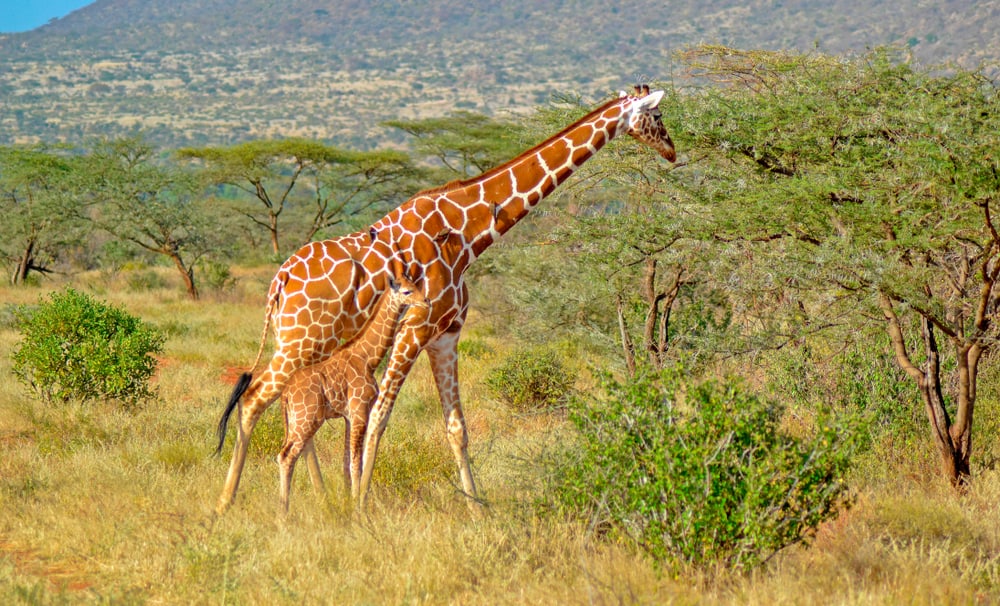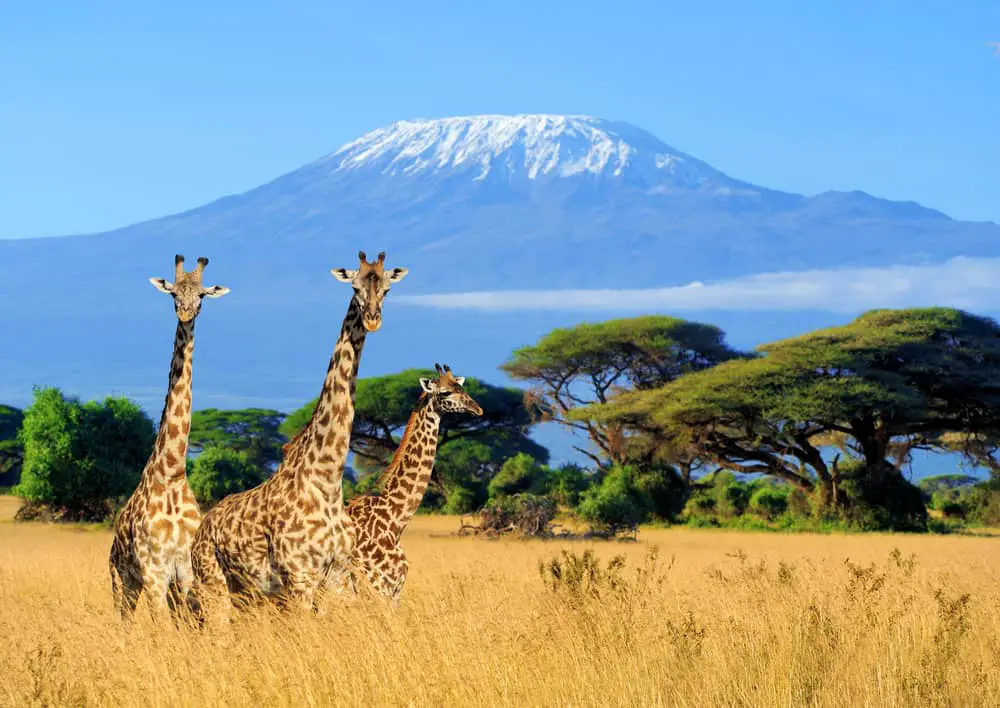Giraffes are one of the world’s most iconic animals, renowned for their long necks and elegant stature. Native to Africa, they inhabit a wide range of habitats throughout the continent.
This article will explore the geographic distribution of giraffe species, outlining both the areas where these majestic creatures can be found in abundance as well as those from which they have become locally extinct. It will also discuss some of the threats that face giraffes today and how conservation efforts are attempting to protect them from further decline.

Geographic Distribution Of Giraffes
Giraffes are found in sub-Saharan regions of Africa, ranging from the southern edge of the Sahara desert to South Africa. They can be observed in many different habitats, including savannas and open woodlands. Their distribution is dependent on availability of food and water sources, as well as their migration patterns which are influenced by social behavior.
In addition to maintaining a relatively fixed home range, giraffe populations also migrate seasonally throughout the year due to diminishing resources or changing climatic conditions. This often leads to an increased need for contact with other individuals and contributes to their strong social bonds within herds.
Giraffes may communicate through scent marking and vocalizations, such as bellowing sounds during courtship or loud snorts when there is danger nearby. In sum, giraffes have adapted to living across diverse African landscapes while adjusting their movements depending on the time of year, available resources, and social interactions.
| Country | Giraffe Range |
|---|---|
| Kenya | Throughout the country |
| Tanzania | Serengeti, Tarangire, and more |
| South Africa | Kruger National Park |
| Botswana | Okavango Delta and reserves |
| Namibia | Etosha National Park |
| Uganda | Murchison Falls National Park |
| Zimbabwe | Hwange National Park |
| Zambia | South Luangwa National Park |
| Niger | W National Park |
| Chad | Zakouma National Park |
| Cameroon | Bouba N’Djida National Park |
| Sudan | Dinder National Park |
| Senegal | Niokolo-Koba National Park |
Please note that this is not an exhaustive list, and giraffes may also be found in other countries within Africa.
Giraffe Habitats
Giraffes are widely distributed throughout the savannas, grasslands, and open woodlands of sub-Saharan Africa. They inhabit a wide variety of habitats but have evolved to favor areas in which they can feed off the tops of trees, their primary source of sustenance. Giraffe diet consists mainly of leaves from Acacia tree species as well as some shrubs, herbs and grasses. This allows them to live in many different types of ecozones such as mixed woodland or semiarid areas with fewer food sources than other ungulates.
In addition to their dietary needs, giraffes also need an environment that provides enough space for social behavior. They form small herds led by a single female that often contains multiple males; this structure serves several purposes including protection against predators and access to resources like food or water during times when it is scarce across the landscape.
Additionally, these groups help decrease competition between individuals since dominant members will tend to monopolize certain resources if left unchecked. Males may engage in sparring matches while females sometimes nuzzle each other’s necks in order to establish dominance within the herd hierarchy. As seen here, habitat selection by giraffes is not only influenced by its immediate resource availability but also by potential interactions with conspecifics nearby.
How Big Are Giraffes: Unveiling the Height of Graceful Giants
Threats To Giraffe Populations
Giraffes are most commonly found in the African savanna, however their range does extend into other areas including woodlands and grasslands. Their habitats typically include large open spaces with scattered trees and shrubs for them to browse on leaves and bark.
Unfortunately, this habitat is increasingly being fragmented due to human activities such as deforestation, urbanization and agricultural development which can lead to a decrease in food availability and the loss of genetic diversity within populations.
In order to protect giraffe populations from further decline it is essential that conservation efforts focus on protecting prime habitats while also prioritizing anti-poaching initiatives. Increased awareness amongst locals living near giraffe habitats has been shown to be effective at reducing poaching activity by creating an understanding of why these species must be protected.
Furthermore, governments should invest in enforcement efforts that ensure existing laws against hunting or capturing wildlife are upheld. By taking steps towards preserving giraffe’s native habitats and increasing protection from poachers we can help ensure their continued survival in the wild.
Conservation Efforts
The plight of the giraffe is one that has been long and arduous. These majestic creatures are symbols of grace, beauty, and strength in many African countries. They have faced a number of struggles for centuries, but today the biggest issue facing them is their uncertain future.
Conservation efforts must be taken to ensure the survival and continued migration of these animals from region to region across Africa. Giraffes tend to live on open grassland plains or woodlands where food sources such as acacia trees can be found, which they love eating year-round. In order to protect them, it is essential that large tracts of land remain intact with minimal human interference so that giraffes can migrate naturally within their own habitats.
Poaching prevention measures need to be put into place around protected areas; this could include increased patrolling by authorities and educating local communities about the importance of conserving these amazing creatures. Additionally, reforestation initiatives should be implemented where needed in order to restore any damaged ecosystems due to deforestation or other activities.
Ultimately, if conservation steps are taken now then we may see an increase in giraffe populations in years to come.
Giraffe Extinction Risk
Giraffes are native to the savannas and open woodlands of sub-Saharan Africa.
They rely on a variety of dietary needs, ranging from grasses and leaves to fruits, flowers and twigs.
As social animals, giraffes live in herds that typically consist of adult females and their young offspring but occasionally include multiple males as well.
The populations of wild giraffes have been declining due to threats such as habitat destruction, poaching and civil unrest; however, conservation efforts focus on protecting their natural habitats while also increasing awareness and promoting sustainable practices throughout the continent.
Conservationists understand the importance of preserving these unique species for future generations by respecting their dietary needs and social behavior.
The goal is to ensure there will be healthy giraffe populations for years to come.

Conclusion
Giraffes are an extraordinary species, whose habitats span across a vast range of the African continent.
Despite their remarkable geographic distribution, giraffe populations have seen drastic declines due to habitat loss and fragmentation, poaching, disease, and other human-induced threats.
Conservation efforts must be ramped up if we want to preserve this majestic species from extinction.
Wildlife protection initiatives must focus on safeguarding existing habitats as well as creating new ones for the future survival of giraffes.
We must also strive to educate communities about the importance of protecting these graceful creatures so that they remain part of our planet’s rich biodiversity into perpetuity.

